The Saga of Sree Padmanabha
Malayinkil Gopala Krishnan
Sree Padmanabhaswamy temple which has won global fame through its recently opened secret vaults containing mindboggling treasures is located in Thiruvananthapuram, the capital city of Kerala state in the southernmost tip of India.
One of the world's most important Vaishnava temples, the ten centuries-old shrine is the abode of Sree Padmanabha, the presiding deity of Thiruvananthapuram. It is also one of the very rare temples where Lord Vishnu or Padmanabha is on a reclining pose on the serpent god Anantha from whom the capital receives its name Thiruananthapuram, the land of holy Anantha. Situated in an 8 acre-plot in the heart of city, the temple has for long remained a wonder for visitors from far and wide. The imposing main temple, its tall towers and the fortress-like walls are all built in granite. The granite sculptures, murals and also the huge 18 feet-idol of Padmanabha and its sprawling courtyards and quadrangles are spectacular. The temple tank -Padmatheertham- where fresh water used to be brought in through underground pipes from a dam located 6 kilometer away on Killi river since many centuries ago has remained an engineering marvel for the age. The huge fortress -Kottainside which the temple is located also houses a vibrant township with palaces, houses, shops etc and also a large community of people who continues to live following age-old traditions. The large clock -Methan mani- which shows the picture of a man's face being hit on the cheeks by two goats from both sides at every striking hour is a big draw outside the temple. Though there is no bar for anyone inside the fort or Kotta, entry into the temple is restricted to Hindus. A large archival museum is located on the eastern side of the temple for visitors though photography is prohibited inside the premises. The museum has on display centuries-old thrones, crowns, paintings, artifacts and other gifts from foreign dignitaries etc.
Long ago the present state of Kerala was composed of many native kingdoms. Travelers like Marco Polo have narrated the region's early history in detail. History was created in 1498 when the Portuguese sailor Vasco da Gama stepped down at Kozhikode in north Kerala to become the first European to find a new sea route to Asia circulating Cape of Good Hope. Kerala those days had consisted of large kingdoms like Kolathunad in far north, Zamorin's land in Kozhikode, Perumpadapp of Kochi and Venad or Tiruvithaamkur (Travancore) down south besides many tiny principalities ruled by local princes. Lord Padmanabha was the family deity of the Venad royalty. But as per Sangam literature the temple was originally owned by Aay royalty which had ruled the region centuries before the emergence of Venad royalty. The ascent of Venad royalty had taken place only after the decline of Aay royalty during 10th century. Two streams of Aay royalty had merged with the Venad which led to the temple's ownership falling into the latter's hands. References about the temple appear in ancient Indian texts like Skandapuranam, Sreemad Bhagvatham, Padmapuranam, Varahapuranam, Malsyapuranam, Brahmapuranam, Brahmandapuranam etc. Descriptions of the temple are seen in ancient Malayalam texts like Unniyachicharitham and Ananthapuravarnana of 13th and 14th centuries respectively.
Legends
Myths also abound on the temple. Prominent among them are those related to sages like Divakaramuni, and Vilvamangalam swami. According to one legend a young and smart boy used to assist Divakaramuni an ardent Krishna devotee in the conduct of his pooja. Muni though was quite fond of the kid, once he scolded him for his naughtiness. The deeply offended boy soon vanished after asking his master to come to "Ananthankadu" if he ever wanted to see him. It was only then that Muni realized that the kid was none other than Lord Krishna himself. Overwhelmed by deep sense of guilt, Muni soon set out searching for Ananthankadu. But he could not find a place by that name even after many days. One day, the wandering Muni overheard a backward caste woman admonishing her weeping baby and threatening to throw it to Ananthankadu if it did not sleep. Learning from the woman its whereabouts Muni immediately reached Ananthankadu and prayed to Lord Vishnu for a darshan. This led to the fall of a large tree which stood nearby and on it appeared the mammoth figure of Lord reclining on serpent Anantha. The huge figure had its feet at a place 8 miles away from where Muni stood while the head was at a place which was four miles off. The lord's midriff region coincided with where the sage had stood. This made the sage complain to the Lord that he was unable to see him in full. Complying with the request the Lord reduced himself into a smaller shape. Sage's first offering to the lord was a raw mango he had picked from the forest. There are also other versions where the sage was Vilvamangal and not Divakaruni.
Another legend is about a backward caste woman who happened to hear a baby crying from a forest. Soon she saw a kid standing beneath a tree with a huge serpent besides him its hood raised. The panicked woman cried aloud and ran to inform the local landlord. The landlord came to the spot with assistants but the kid and the serpent had vanished from there. Landlord immediately built a temple on the spot and the first offering he made was all that the woman had with her; a coconut shell, some paddy and a mango. The landlord the gifted the woman the paddy fields where she was working at the time. The shrine built then was believed to be the original Padmanabhaswami temple. For a long time the paddy raised at the field gifted to the woman was used exclusively for the pooja at the temple. The field was named "Tiruputharikandam" (field for the holy paddy) and it was converted to a filled ground after the country became independent and democracy replaced royal rule. It continues to be called Putharikandam even today and is used as a public stadium. To keep the memory alive, the city corporation has recently started growing paddy in a small part of the ground. The ceremonial re-launch of paddy cultivation here was conducted at a grand function attended by the Mayor, ministers in the state government, prominent citizens etc. The paddy reaped from here was offered ritualistically to the temple. The paddy was received on behalf of the temple by Uthradom Tirunal Marthanda Varma, the present head of the Travancore royal family who was the crown prince when the family gave way for democratic system.
History of the Temple (Upto 1750)
Historical documents on the temple dating since 14th century are available. These are called Mathilakam Documents, as matters related to the temple used to be known Mathilakam. Hundreds of thousands of Matilakam documents written on palm leaves are under the custody of the state Archives and are an invaluable treasure for students of history. Pertaining to the period from 1375 to 1728, the oldest among these documents is of the year 1336. (Year 511 in Malayalam calendar). Written in ancient languages like Malayanma and mixtures of Malayalam and Tamil, this perhaps is the only documents throwing light on the socio-political affairs related to the temple. As per these documents the temple was immensely rich even since 14th century. Besides vast stretches of landed property, the temple also used to receive much wealth, gold, elephants etc made as offerings or penalties by devotees.
As time went by, the Venad royalty was split into various branches which began to fight with each other for power and pelf. European colonial powers which had appeared in the region by 15th century in search of spices had grabbed political power in many places capitalizing on the internal rivalries between native kings. The Dutch who had by then held control over Kochi kingdom entered into trade pacts with the other kingdoms down south. The French who had taken over Mahe in north Kerala also were awaiting an opportunity to capture the spice-rich region. English East India Company which had set up forts in Thalassery in Malabar and Attingal in Travancore was cleverer than its European rivals like the Dutch or French. A civil strife broke out during the period in Travancore with the king on the one side and the Brahmindominated Supreme council (called Ettara Yogam with full votes for 8 Brahmins and half a vote for the king) which administered the temple and also the eight land-owning feudal families (Ettu Veettu Pilla) on the other. This caused the temple to be closed down many times. It was in these extremely troubled times that the new king -Anizham Tirunal Marthanda Varmaascended the throne. He was exceptionally brave, resourceful, adventurous and iron-willed. Armed with steely determination to achieve his ambition, he was stranger to cowardice or even compassion. He began to ruthlessly conquer enemies within and outside by building a large army and even hiring soldiers from outside. He exiled the hostile Brahmins, hanged the feudal lords, confiscated their wealth and forcibly gave away their wives to fishermen. Marthanda Varma also launched a successful military campaign to conquer neighboring kingdoms and began moving northwards upto Kochi. Shortly his tiny kingdom of Venad grew into an empire stretching from Kanyakumari in south to the neighborhood of Kochi in north. Varma's triumphant campaign finally enraged the Dutch as the king was grabbing up all the kingdoms which used to supply them pepper, spices etc. Their attempts to enter into trade pact with the king also met with failure. Finally the Dutch decided to encounter him militarily. But in what turned out to be one of the biggest surprises in history, the native prince defeated the mighty global maritime power in the war at Kolachal beaches near Kanyakumari in 1741. He captured the Dutch fleet's commander Eustachius D'Lenoy as prisoner of war and later made him his own army's commander. Varma also seized the vital and lucrative pepper trade. D'Lenoy helped Varma modernize Travancore army on European lines, helped manufacture canons and guns and built formidable fortresses.
After being the only native prince who brought to a European power to knees, Marthanda Varma understandably became the supreme power feared and revered by all the kings and people all over Kerala. Even as he subjugated neighboring kingdoms and expanded his empire, Varma had begun renovating Padmanabhaswami temple on a large scale, constructing a fort around it and also building the tall temple towers. He had huge rock boulders towed from Thirumala and constructed the famed monolithic mandapam. Mammoth teak logs were brought through the sea from Tamil Nadu to build the flag mast. The 18 feet-long idol was made with Salagrama (a black stone holy for Vaishnavas) procured from Gandaki river of Nepal. The imposing Seevelippura built with granite continues to be a marvel even to modern engineering. This hall is held by huge granite pillars adorned with artistic sculptures and drawings. Documents show this was built by 4000 stone workers, 4000 laborers assisted by 100 elephants. The temple towers upto their fifth floor were constructed during Varma's period.
Trippadidanam was a ceremony the astute Varma had conducted in 1749 both as an expression of his devotion to Lord Padmanabha as well as a clever political strategy. It was the historic ritual by which Varma laid down his empire at the feet of the lord Padmanabha and declared he would henceforth rule only as Padmanabhadasa, servant of the Lord. Since then all the successors of Varma -until the last king Chithira Tirunal Balarama Varma who died in 1991- called Padmanabhadasa and ruled the state as the "lord's representative". The country thus became God's Own. The temple became the pivot of the administration. Until the last king the royal family never took back anything they gave as offerings to the lord.
Hiranyagarbha and Murajapam
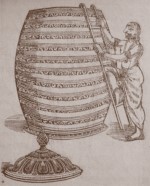
Among the many rituals and ceremonies Marthanda Varma had introduced at the temple were Tulapurushadanam, Hiranyagarbhadanam and Murajapam. Tulapurushadanam was a ritual when the king would be weighed against an equal measure of gold which would be distributed ceremoniously among the priests and Brahmins. Hiranyagarbham was a ceremony held at the time of the king's coronation. Literally meaning the Golden Pregnancy, some historians say it was a ceremony in which the king passed through the abdomen of a "cow" made of gold in order to assume the status of Kshatriya, the royal caste. However some historians and a top official of the royal government like P Sankoony Menon gave another explanation. According to him it is a ceremony when the king designate amidst Vedic chantings enter a golden vessel filled with milk, ghee etc. He would come out of the vessel after 10 minutes, lay down his sword in front of the deity and prostrate. The priests then put the Kulasekharaperumal crown on the king designate. Kings from Marthanda Varma upto Sree Moolam (1924) used to hold this ritual. But considering the huge expenditure incurring for the ritual, the last king Balarama Varma put an end to this. Murajapam was a major ritual held every 6 years. It was a 56-days long, non-stop Vedic chanting ceremony by hundreds of Brahmins converging from all over the state and also outside. One of the major expenditures incurred to the government was on account of the lavish hospitality provided for these Brahmins for 8 weeks.
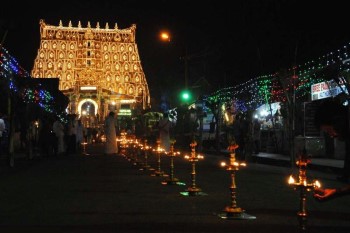 Lakshadeepam -literally 100000 lamps- was another ceremony held to mark the end of the 56 day-long Murajapam when all the 100000 lamps around the temple would be lighted. Murajapam and lakshadeepam are held even now albeit with much less splendor and related expenditure. Other festivals that continue to be held in the temple annually are Alpasi and Painkuni. Both these festivals conclude when the idols are carried through the city streets accompanied by an Arattu, a grand procession of mounted soldiers, caparisoned elephants etc led by the senior most member of the royal family who would walk barefoot for many miles. During the festivals held in connection with the Navaratri, idols of gods and goddesses like Saraswathi Devi, Murukan and Munnutinanga are brought ceremoniously to the temple from Padmanabhapuram, Velimala and Sucheendram respectively. The ritual of raising mammoth models of Pancha Pandava in front of the temple's eastern gate in connection with Painkuni festival continues to date.
Lakshadeepam -literally 100000 lamps- was another ceremony held to mark the end of the 56 day-long Murajapam when all the 100000 lamps around the temple would be lighted. Murajapam and lakshadeepam are held even now albeit with much less splendor and related expenditure. Other festivals that continue to be held in the temple annually are Alpasi and Painkuni. Both these festivals conclude when the idols are carried through the city streets accompanied by an Arattu, a grand procession of mounted soldiers, caparisoned elephants etc led by the senior most member of the royal family who would walk barefoot for many miles. During the festivals held in connection with the Navaratri, idols of gods and goddesses like Saraswathi Devi, Murukan and Munnutinanga are brought ceremoniously to the temple from Padmanabhapuram, Velimala and Sucheendram respectively. The ritual of raising mammoth models of Pancha Pandava in front of the temple's eastern gate in connection with Painkuni festival continues to date.
The Deity in Public Eyes
The 18 feet-long idol of Padmanabhaswamy is in a reclining position. The reclining idol can be seen only through three doors. The lord's right hand with fingers formed in Chinmudra sign hangs over a Sivalinga. The serpent god Anantha's huge hood mushrooms over His head. Brahma, the four-faced god of creation sits on the lotus flower that grows out of the idol's navel. Hermits and sages stand beside the idol with folded hands. Two goddesses sit near Him. In a smaller chamber in front of the mukhamandapa stand the idols of Lord Sreerama, Lakshmana and Seetha. Hanuman stands in their front. There is also a silver idol of Lord Ganesh. The idols of Narasimhamoorthy, Vyasa, Asvathamav, Hanuman, Sastha can be seen in various smaller chambers outside the main chamber.
The Treasures
 With the recent opening of its vaults, the Sree Padmanabha swami temple has been acknowledged as the world's richest place of worship. Except for one all the five vaults were opened in July-August 2011 as per Supreme Court orders which revealed mindboggling treasures kept safe for centuries. They consist of gold, diamonds, silver, other precious stones in the form of ornaments, idols, coins from different countries, artifacts etc. Estimate of the total wealth of can be made only after the sixth vault is also opened. Unofficially the worth of the treasure so far revealed is put around Rs 1,00,000 crores. This is calculated on the basis of the treasure's intrinsic worth and if the antique value too is factored in, the real value surely would be many times more. Except vaults A and B the others contained utensils and ornaments which have been regularly taken out and used at the time of festivals. But vaults A and B have remained locked for a long time and only A was opened now. Vault B is to be opened after the Supreme Court grants permission. According to legends, opening the vaults A and B could invite wrath of god and disasters for they are to be opened only in times of famine to find funds for the state. Though it is said that king Visakham Tirunal had opened the vaults and took some gold to face the famine during his reign (1880-85), there are hardly any documented evidence for this.
With the recent opening of its vaults, the Sree Padmanabha swami temple has been acknowledged as the world's richest place of worship. Except for one all the five vaults were opened in July-August 2011 as per Supreme Court orders which revealed mindboggling treasures kept safe for centuries. They consist of gold, diamonds, silver, other precious stones in the form of ornaments, idols, coins from different countries, artifacts etc. Estimate of the total wealth of can be made only after the sixth vault is also opened. Unofficially the worth of the treasure so far revealed is put around Rs 1,00,000 crores. This is calculated on the basis of the treasure's intrinsic worth and if the antique value too is factored in, the real value surely would be many times more. Except vaults A and B the others contained utensils and ornaments which have been regularly taken out and used at the time of festivals. But vaults A and B have remained locked for a long time and only A was opened now. Vault B is to be opened after the Supreme Court grants permission. According to legends, opening the vaults A and B could invite wrath of god and disasters for they are to be opened only in times of famine to find funds for the state. Though it is said that king Visakham Tirunal had opened the vaults and took some gold to face the famine during his reign (1880-85), there are hardly any documented evidence for this.
There are many observations and interpretations from historians as to how so much wealth has come to be kept in the vaults. Much of it could be formed from offerings, penalties or donations from kings of not just Travancore but other states as well. There are records for the wealth from 14th century. Much of it could be donated by King Marthanda Varma who amassed huge wealth from his campaign and conquests of other principalities neighboring Travancore during the 18th century. He had conquered many wealthy kingdoms which had flourishing trade of pepper and spices with the Portuguese, Dutch, Danes and English. Many kings and landlords of Malabar had sought asylum in Travancore during the campaign by Tipu Sultan. Much of the wealth that they had brought along too might have found its way to the vaults. Many believe that much of the Travancore royalty's wealth too had been transferred to the temple to save it from a possible invasion by Tipu who had reached up to its northern borders.
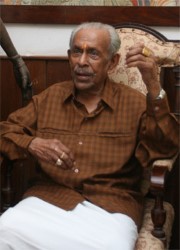 The royal family's intimate and organic relationship with the temple continued even after the end of their rule following India's independence. Even after becoming a citizen of the Indian republic the last Maharaja too lived as Padmanabhadasa. Despite losing power the last Maharaja -Sree Chitira Tirunal Balarama Varma- used to receive widespread love and respect from the public on account of his self effacing humility, affection for people and simple ways. In spite of age and physical ailments he had never missed his daily prayers at the temple twice a day or the Arattu procession twice annually until he passed away at the age of 78 on July 18, 1991. After his demise brother Uthradam Tirunal Marthanda Varma became the head of family and continues all these rituals and ceremonies faithfully.
The royal family's intimate and organic relationship with the temple continued even after the end of their rule following India's independence. Even after becoming a citizen of the Indian republic the last Maharaja too lived as Padmanabhadasa. Despite losing power the last Maharaja -Sree Chitira Tirunal Balarama Varma- used to receive widespread love and respect from the public on account of his self effacing humility, affection for people and simple ways. In spite of age and physical ailments he had never missed his daily prayers at the temple twice a day or the Arattu procession twice annually until he passed away at the age of 78 on July 18, 1991. After his demise brother Uthradam Tirunal Marthanda Varma became the head of family and continues all these rituals and ceremonies faithfully.
Opening of the Vaults
Opening of the vaults The whopping treasures kept for centuries inside the Padmanabhaswami temple's vaults came to public knowledge only in July 2011. This follows a judgment by the Kerala High court in January 2011. The court ordered that the state government should take over the temple's administration from the Travancore royal family which headed the temple's administrative trust. The order was issued admitting a plea by T P Sundararajan, a former IPS official and a temple devotee who in a quo warranto writ raised complaints against the royalty's administration of the temple. According to Sundararajan, who expired subsequently, much of the temple's wealth was being siphoned off. The high court said the royal family had no proprietary rights on the temple. Following this Uthradam Tirunal Marthanda Varma the head of royal family filed a Special Leave Petition in the Supreme Court to quash the high court order. Admitting this, the apex court issued orders to open the vaults and make an inventory of the contents. A seven member panel too was announced by the court to supervise the opening the vaults and preparation of inventory.
 The panel began the opening and preparation of inventory in July last week which helped the precious treasures inside the vaults coming to public light for the first time in recent times. However only 5 of the six vaults have been opened until now and the wealth is unofficially estimated to be worth Rs 1 lakh crore. The Supreme court has also issued orders for the formation of an expert panel to advise on the measures to be adopted to provide the temple adequate security and preservation of the treasures. On September 22 Supreme court has ordered that the remaining vault -B-may be opened after the documentation of all the artifacts found in the five other chambers. The state government has now installed high security system in and around the temple and submitted to the court a security technical committee report putting forth an integrated and multi-layered security system to the court. The expert committee has suggested the "Digital Archiving of Temple Antiques" to implement the plan. A master security plan with an initial budget outlay of around Rs 3crores has been submitted by the expert panel too to the apex court.
The panel began the opening and preparation of inventory in July last week which helped the precious treasures inside the vaults coming to public light for the first time in recent times. However only 5 of the six vaults have been opened until now and the wealth is unofficially estimated to be worth Rs 1 lakh crore. The Supreme court has also issued orders for the formation of an expert panel to advise on the measures to be adopted to provide the temple adequate security and preservation of the treasures. On September 22 Supreme court has ordered that the remaining vault -B-may be opened after the documentation of all the artifacts found in the five other chambers. The state government has now installed high security system in and around the temple and submitted to the court a security technical committee report putting forth an integrated and multi-layered security system to the court. The expert committee has suggested the "Digital Archiving of Temple Antiques" to implement the plan. A master security plan with an initial budget outlay of around Rs 3crores has been submitted by the expert panel too to the apex court.

Sree Padmanabhaswamy temple

Sree Padmanabhaswamy temple
Lakshadeepam
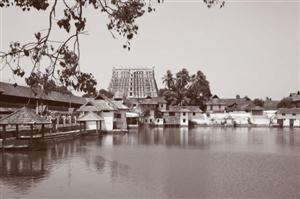
Sree Padmanabhaswamy temple

Sree Padmanabhaswamy temple

Sree Padmanabhaswamy temple
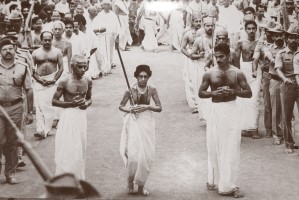
Sree Padmanabhaswamy temple
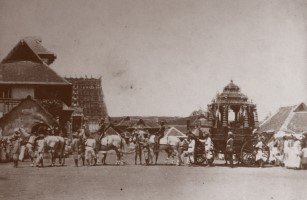
Sree Padmanabhaswamy temple
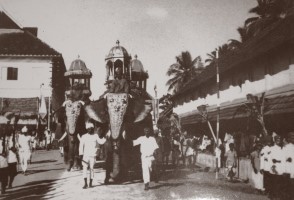
Sree Padmanabhaswamy temple

Sree Padmanabhaswamy temple
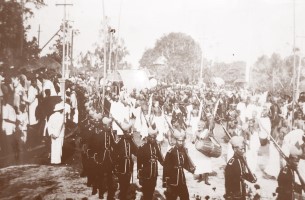
Sree Padmanabhaswamy temple
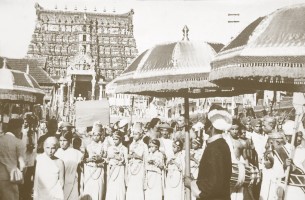
Sree Padmanabhaswamy temple

Sree Padmanabhaswamy temple
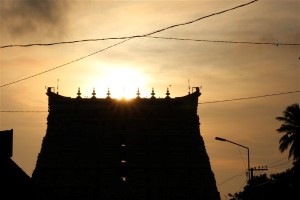
Equinox - Sree Padmanabhaswamy temple
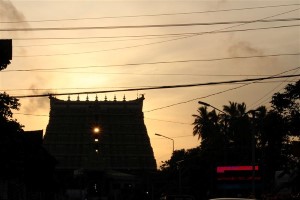
Equinox - Sree Padmanabhaswamy temple
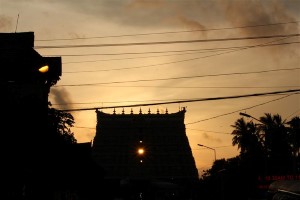
Equinox - Sree Padmanabhaswamy temple
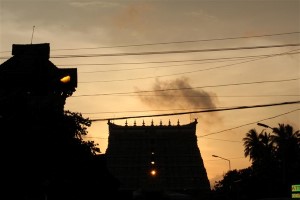
Equinox - Sree Padmanabhaswamy temple